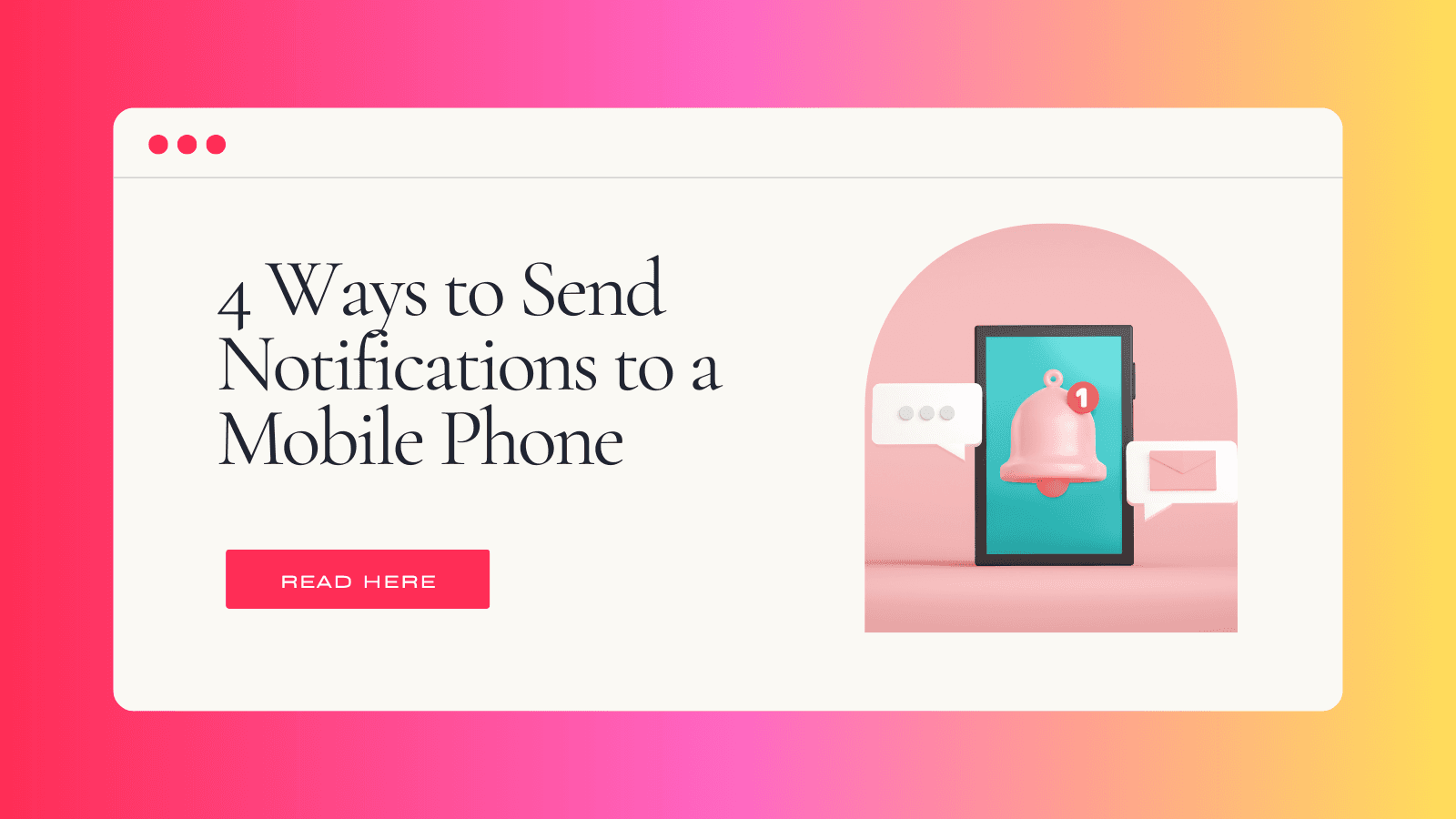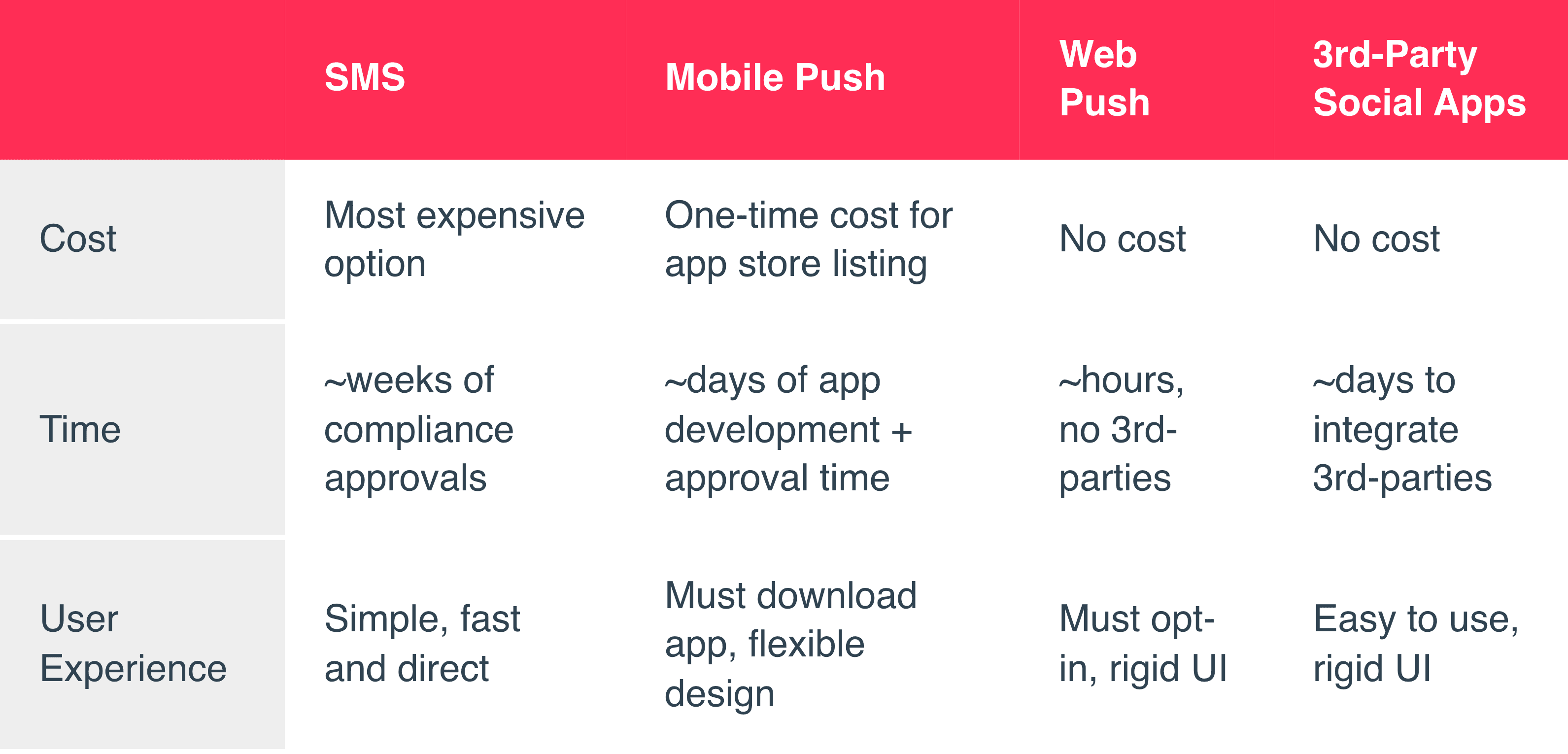BLOGS
4 Ways to Send Notifications to a Mobile Phone
We discuss 4 viable methods of including mobile users in your notification system, providing pros/cons & high-level table for a quick comparison.

If you are building a notification service for your product and wondering how to send notifications to your users via their smartphones, we will discuss 4 solutions for sending mobile notifications.
For a brief overview, here is a table including quick comparison points for our given solutions:

SMS
SMS is a direct way to send notifications to others. Accessible through 3rd-party services, you can integrate notifications via text messages into any project. This will require the designated user’s mobile number, and setting up a plan with services capable of SMS communications such as NotificationAPI, Twilio, etc.
Some drawbacks to consider when approaching SMS notifications are:
-
Making sure notifications feel important
-
Requires users to trust you with mobile numbers
-
At large volumes, it will be costly
-
Notifications must follow 10DLC compliances & regulations (NotificationAPI handles these for you)
Mobile Push
Mobile Push offers a great way to deliver notifications to your audience. Through your app, users can opt-in to notifications without divulging personal phone numbers. If your service is already app or mobile-oriented, getting users to opt-in for updates should have a higher conversion rate than projects or services that don’t rely on mobile at all.
While Mobile Push notifications may sound ideal, developers who haven’t already published an app can find this approach costly and drawn out- here’s why:
- Developing an app for Apple and Google’s app stores
- Sending push notifications requires creating and managing device tokens (NotificationAPI handles this for you)
- Having a mobile app creates expectations of other app functionalities from your end-users
Web Push
Web Push might be the most approachable method for those building their own notification system. Its straightforward design lets users create basic notifications either on their own or through integrating 3rd-party services. Developers can skip building an app or purchasing an SMS service plan, saving both time and money. Users can opt-in by simply visiting your website on their phone and allowing Push notifications when prompted. These web push notifications look similar to app notifications, but offer less flexibility and options.
Web Push is a viable solution for mobile notifications, however, there are some minor cons worth mentioning:
- This requires your users to first visit your website and allow Push Notifications
- You need to generate device tokens in your front-end and store it in the back-end (NotificationAPI does this for you)
- These notifications are easily dismissed and forgotten without a dedicated inbox (NotificationAPI offers an in-app notification inbox)
Other Social Apps (Slack, WhatsApp, Telegram)
Using 3rd-party communication apps allows for free integration of notifications through apps your users may already use. These apps are already well optimized for user experience so they look and feel good to use.
Having great UX at no cost are good enough reasons to consider 3rd-party apps for notifications, though there are still some downsides:
- For apps like Slack, it takes time to develop and integrate your server/channel
- Similar to Mobile Push, using 3rd-party apps generates the expectation of more than just notifications
Conclusion
Picking the right approach depends a lot on the platforms your company aims to support. For example, if your software is only going to be accessible through a web interface, then SMS and Web Push Notifications are viable options. If you have plans for a mobile app, then mobile app notifications are certainly the right way to go. If you believe most of your users will integrate your software into existing apps, then you may want to consider the last option.